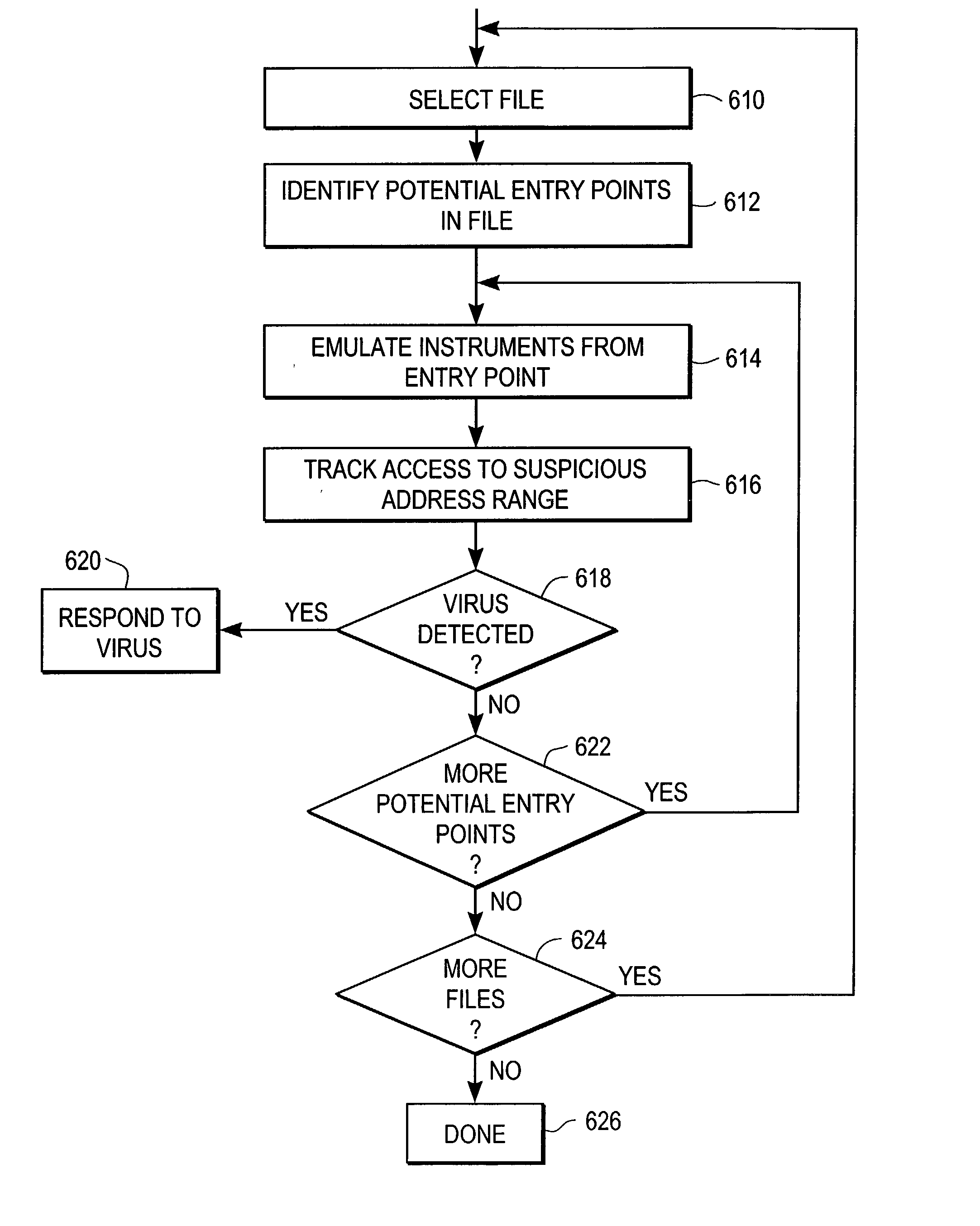Heuristic detection of malicious computer code by page tracking
a malicious computer code and page tracking technology, applied in the field of page tracking to detect malicious computer code, can solve the problems of malicious code being malicious code, malicious code not being able to call apis, and being unable to call system apis,
- Summary
- Abstract
- Description
- Claims
- Application Information
AI Technical Summary
Benefits of technology
Problems solved by technology
Method used
Image
Examples
Embodiment Construction
[0018] Malicious code typically infects a host file by attaching or altering code at or near an "entry point" of the file. An entry point is any instruction or set of instructions in the file, a pointer to an instruction or set of instructions, or other data in the file that malicious code can modify to gain control of the computer system at which the file is located. An entry point is typically identified by an offset from some arbitrary point in the file. Certain entry points are located at the beginning of a file or region and, therefore, are always invoked when the file or region is executed. For example, an entry point can be the first instruction executed when the host file is executed or when a function within the file is called. Other possible entry points are single instructions deep within the file that can be modified by malicious code. For example, the entry point can be a CALL or JMP instruction that is modified to invoke the malicious code. Once malicious code seizes c...
PUM
 Login to View More
Login to View More Abstract
Description
Claims
Application Information
 Login to View More
Login to View More - R&D
- Intellectual Property
- Life Sciences
- Materials
- Tech Scout
- Unparalleled Data Quality
- Higher Quality Content
- 60% Fewer Hallucinations
Browse by: Latest US Patents, China's latest patents, Technical Efficacy Thesaurus, Application Domain, Technology Topic, Popular Technical Reports.
© 2025 PatSnap. All rights reserved.Legal|Privacy policy|Modern Slavery Act Transparency Statement|Sitemap|About US| Contact US: help@patsnap.com



